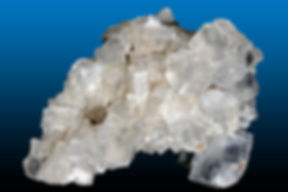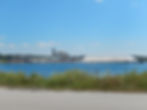
In focus
Pugwash, Nova Scotia
Scroll up to view


The salt cathedral
Salt is life. For humans, as well as animals, salt in the correct amounts is essential to survive and thrive. Since the beginning of recorded history salt has been mined to season and preserve food. Today it is an important mineral with an infinite number of applications with food as well as the manufacture of plastics, paper and other products. It is a common a de-icing agent for highways and home and can be found in agricultural applications.
The world is blessed with an abundance of salt with huge mines scattered around the globe. Our oceans comprise approximately 3.5% salinity and over eons have been the source of salt deposits. Halite, commonly known as rock salt, is comprised of sodium and chloride with it’s chemical composition identified by the formula NaCl.
Pugwash, a small coastal town in Nova Scotia, Canada, is home to the only salt mine, and underground mine, in the Province. In 1953 a lobster fisherman discovered salt as he was drilling for water at his lobster factory. This discovery led to the Canadian Salt Company establishing a mine and hauling out the first load in 1959. Today the mine employs over 200 people and produces industrial grades of salt, salt blocks for farming and refined salt for domestic consumption. Approximately 1.2 million tonnes of salt are mined each year and at current production levels it is estimated that there is well over 100 years of salt deposit still to be mined.
The Pugwash mine is an industrial complex that is not open to the public. However employees can have tours arranged for relatives and very close friends a couple of times per year. We were fortunate to have a relative who works in the mine invite us to one of these exclusive tours.
Safety is the number one concern for the mining operation. When our small tour group arrived we were ushered into a training room to learn all about mine safety including emergency procedures in the event of an unexpected incident. Before heading off to the mine shaft we were issued with miners lamps, safety/survival equipment, a safety helmet and miners boots with steel- capped toes.
As we waited outside of the steel lift cage we were told that we were going down some 1300 feet. There was a palpable air of nervousness with our group as we squeezed into the steel cage with no roof. All of us expected our stomachs to jump up into our throats as we hurtled down into the bowels of the earth. Nothing of the sort. We learnt later that the lift is driven by a cutting edge, Swiss engineered, mine winch. Our journey down, and later back up, was as smooth as silk.
On the way down we passed various levels of the mine. Some working, and some shut down. At the bottom we emerged to enter a pressure equalisation chamber and then into the mine itself. Most of us think of mines as claustrophobic places with the roof and walls seemingly pressing in on you. What we were greeted with took our breath away. The sensation was similar to entering a great cathedral with an almost overwhelming sense of space. The ceilings are between 30 and 60 feet high. The passage ways are wide enough to allow two oversize ore trucks to pass each other.
We travelled around the mine in an open backed truck fitted with a safety cage. Huge trucks, mining equipment, conveyor belts and other equipment worked in tandem to bring the salt to the surface way above us. In a feat of engineering, we learnt that every piece equipment in the mine came down the same way that we did. Everything is dismantled on the surface and the various parts are loaded into the mine lift cage. Mechanics rebuild everything once at the mine location.
Dynamite is used to help the mining process and red markings showing where the explosives were to be positioned were everywhere at the mine faces. Our group was happy to learn that dynamiting was not scheduled during our visit.
From a photography point of view this was without doubt my most challenging experience. Lighting is minimal in the mine with most light coming from the mining equipment, trucks and miners lamps. Very often we were plunged into total darkness. Setting up shots with the correct exposure and focus was considerably more than difficult. As luck would have it the extensive conveyor belt system was down for maintenance. The ore trucks were working overtime
and kicking up a high volume of extremely fine salt dust that hung in the air. This in itself was a major concern for my camera equipment. However people and camera equipment survived. Sprinkling salt on my food now always recalls that incredible place.





Contact: fastbrit@gmail.com

Click image to enlarge
COMBINED EXPERIENCE
We have the know-how you need.
50 years of

Rock salt

Pugwash salt mine

Pugwash salt mine

Rock salt